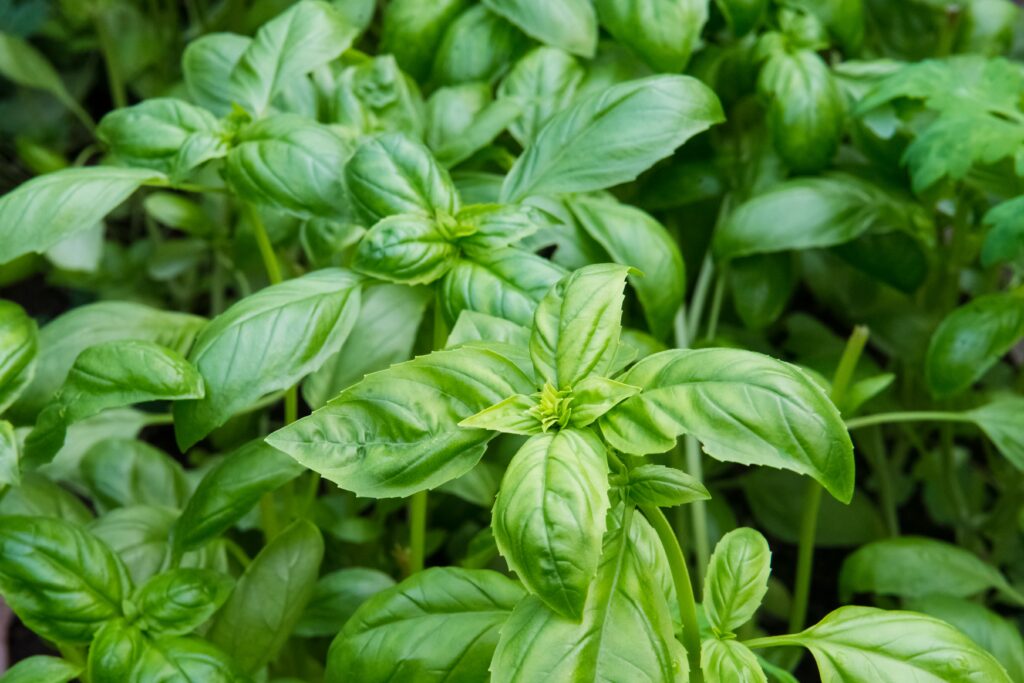5 Easiest Herbs to Grow Indoors & Year Round
Ever wished you could pick fresh basil right from your kitchen whenever you’re cooking up a storm? Or how about snipping some mint for that refreshing afternoon tea? Well, welcome to the place where you will learn about specific herbs that grow best indoors, and fill your home with the aromatic fragrance of herbs like rosemary, parsley, or chives, and you’ll have the convenience of cutting off a sprig or two whenever a recipe calls for it. Let’s bring a touch of green magic into your home sweet home!
Herbs: A large group of savory or aromatic plants that are used as garnish or flavoring. They may be perennial or annual, leafy or wood! Most herbs are grown for their leaves, which can be eaten fresh or dried, but some varieties are also grown for their flowers and seeds.
To grow your herbs indoors successfully, you’ll need a few simple essential items:
- A bright sunny window
- A pest-free plant (inspect seedlings carefully before buying)
- A selection of herbs that grow well indoors
- And a little knowledge about each plant’s needs
Here are the top 5 easiest herbs to grow indoors:
1. Mint

Mint is a perennial that produces new foliage all year long, making it one of the easiest herbs to grow inside as long as you give the plant enough light and consistent moisture. There are hundreds of different species, hybrids, and cultivars of mint. Some are more common than others when it comes to their flavor and popularity.
Mint also makes a surprisingly beautiful houseplant with it’s crinkly green leaves and stems of some varieties tumbling down over the sides of the pot. And the best part is that mint plants can bloom indoors even through the dead of winter.
Top 3 Uses:
- Use in Mojitos
- Delicious Mediterranean cuisine
- Infuse leaves in water to make a refreshing Peppermint tea
2. Basil

Growing basil indoors isn’t just about convenience—it’s like having a flavor-packed green buddy that adds zest to your culinary adventures.
Basil is a carefree plant that needs little maintenance. Well-drained soil, good air circulation, occasional watering, and plenty of sunlight are enough to keep a basil plant in good shape. The plant responds well to pruning, but don’t really expect indoor plants to get quite as large as those grown outdoors.
Top 3 Uses:
- Commonly used in Italian Pasta dishes
- Homemade pesto or tomato sauce
- Garnish Savory meals
3. Rosemary

One of the most popular Mediterranean herbs, rosemary is beloved by many gardeners for its delicious culinary flavor and beautiful, relaxing scent.
Rosemary is a perennial plant with needle-like foliage that is usually grown as an outdoor plant since it can get quickly get quite large, (though that can take several years) but, if you intent on having the fresh herb available for cooking year-round, then rooting stem cuttings for planting, or moving small potted plants indoors for the winter, is a great option.
Top 3 Uses:
- As a spice when cooking, especially in Mediterranean dishes
- For medicinal purposes
- Pairs beautifully with potatoes, is fantastic in breads, and adds a rich flavor to roasted vegetables
4. Parsley

Parsley is a great variety to try, It’s a biennial (though many grow it as an annual) It’s widely used as a garnish, and is an ingredient in many recipes and salads. There are health benefits of parsley too; it’s rich in antioxidants and vitamins. There are two main species of Parsley: Curly Parsley and Flat Parsley. Flat leaf parsley has a more robust flavour whereas the curly variety is widely used as a garnish for decoration.
And the best part about it that it’s an easy herb to grow, and will be perfectly happy on a sunny windowsill inside your home.
Top 3 Uses:
- Great in soups and sauces
- Cooked with vegetables for extra flavor
- Popular ingredient in many Middle Eastern cuisine dishes
5. Chives

Growing chives indoors make perfect sense that you have them near your kitchen to liberally spice up your food and brighten up your space! They grow indoors with a relatively low-maintenance and don’t require frequent fertilization but will greatly benefit from a regular trim. Chives are very easy to grow and only needs four or five hours of sunlight a day.
They also survive best in damp soil so make sure the soil doesn’t dry out. Pots must have holes in the bottom for drainage. Use a good houseplant potting mix that has light.
Top 3 Uses:
- Garnish salads
- Add to egg mayonnaise sandwiches
- Great in potato dishes
Learn More
There’s so much more to discover on this topic. Don’t be afraid to experiment with different growing conditions and techniques to find what works best for you. With a bit of care and attention, your indoor herb garden will flourish, providing you with fresh herbs all year round. If you’re interested in deepening your understanding, exploring related subjects, or staying up to date with the latest insights, we’ve got you covered. Below are some additional resources and articles that can guide you further more!
- How to Grow Basil Indoors at Home: Dive into a step by step guide.
- 2 Easy Ways To Preserve Your Herbs: Explore various options and methods.
- Homemade Basil Pesto Recipe: Discover the joy of homemade cooking!